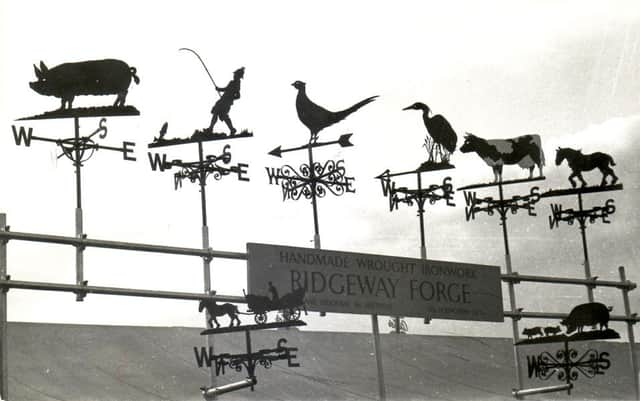Home of scythes and sickles


The village lies on the Sheffield-north Derbyshire border and its name, originally said to be Anglo-Saxon, comes from the ancient route that it is situated on.
The fascinating website www.ridgewayhistory.org.uk says that Ridgeway and surrounding villages were home to sickle and scythe manufacturers for hundreds of years.
Advertisement
Hide AdAdvertisement
Hide AdTheir once vital agricultural products were exported around the world.
One Ridgeway company was Hutton and Co, who at one time occupied the Phoenix Works.
Brothers Joseph and Ezra Hutton first formed a partnership in 1791, the website says.
Their first workshop, the Palais Royal, later became the Queen’s Head pub.
Advertisement
Hide AdAdvertisement
Hide AdIn 1845 the name changed to Hutton & Newton, which used the Bird’s Eye trade mark.
The firm only closed in 1988 and was at that time the last remaining British scythe and sickle manufacturer.
The firm had long-standing links to many Ridgeway families.
In August 1832 Walter Rippon won a competition in the Sheffield Independent newspaper for having the longest-lasting family connection to any firm.
He could trace his family’s working links to the company back to 1760, over five generations.
Advertisement
Hide AdAdvertisement
Hide AdWalter Rippon was works manager and told the newspaper that he was the only member of staff who could remember the tools being manufactured mainly by hand.
He began work before the age of nine but was dismissed because of his age and later taken back on half time and went to school for the other half of the week.
He received wages of 4d per half day that were paid once a fortnight.
Walter still had his great grandfather George’s indentures when he was apprenticed for seven years as a sicklesmith.
Advertisement
Hide AdAdvertisement
Hide AdThe document stipulated that he was not to “commit nor matrimony contract”, frequent alehouses or taverns, play illegal games or absent himself from his master’s service without permission.
The intrepid donkey mentioned before belonged to a Victorian sickle manufacturer, John Haslam.
He had workshops in Broomheads Yard, Ridgeway.
In 1881 he employed six men.
In 1991 the children of Ridgeway Primary School produced a booklet inspired by the story of John Haslam.
A map to be found on Sloade Lane, Eckington details the journey of his donkey which was laden with newly-made sickles and scythes.
Advertisement
Hide AdAdvertisement
Hide AdThe trip was about two miles, which the donkey made alone, delivering scythe blades to firms further down the valley.
The renowned Old Vicarage restaurant in Ridgeway, run by top chef Tessa Bramley for more than 30 years, is based in a Victorian house completed in 1846.
It is set in grounds laid out by a celebrated Victorian horticulturist with specimen trees first brought over as seedlings from the Middle East in 1850.
The village became home to Sheffield’s first no-smoking pub in November 2003.
Advertisement
Hide AdAdvertisement
Hide AdAfter a busy opening weekend, manager Sharon Barker told The Star that the Phoenix on High Lane would be a big success.
“We opened on Saturday and I was really pleased with the way things went, “ she said.
“Nobody lit up a cigarette at all, so we didn’t have to tell anybody off.
“Even our regulars who do smoke seemed quite happy with the new rules and went outside to have a fag.”
Advertisement
Hide AdAdvertisement
Hide AdThe 400-year-old former coaching inn decided to introduce a smoking ban after a £78,000 refurbishment by then owners the Laurel Pub Company.
Sharon said: “It’s much more pleasant to work in a non-smoking environment. There’s nothing worse than being stuck behind a bar with a customer at the other side blowing second-hand smoke in your face.”
The smoking ban eventually came into force in July 2007.